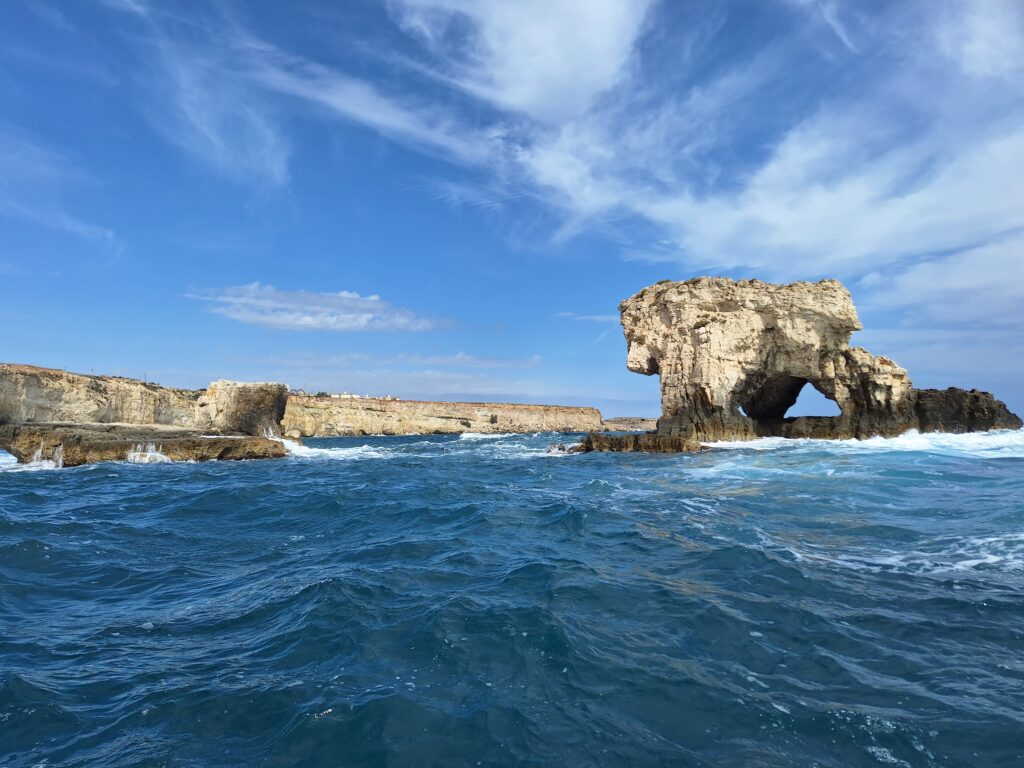
If there is something Siracusa is proud of, it is Archimedes. A multi-artist in the format of Leonardo da Vinci (or Trondheim’s Johan Daniel Berlin): Mathematician, physicist, engineer and inventor in what at the time (250 BC) was one of the largest and most important cities in the Mediterranean. Among the general public, he is perhaps best known for his ‘EUREKA moment‘, when he figured out how to compare the density of two bodies of different shapes. This happened when he lowered his body into his bath tub, observing that the water rose and overflowed as his body took up volume from the water. Those of us who have taken Physics at secondary school remember years with jokes like this: ‘When a body is submerged in cold water, it comes up again quickly!‘. Of course, this won’t normally apply to Tobatheornottobathe’s bodies…

The story about Archimedes’ naked jump out of the bath, running through the city shouting: ‘EUREKA!‘ (I’ve found it!) is not as unlikely as you might think. First of all, nudity was more common in ancient Greece (the Olympic Games took place without clothes), and also: Archimedes was widely known to be so busy solving problems that he often forgot to eat, bathe and change his clothes.
There are several different versions of the murder of Archimedes. The most common is that he was so focused on his studies that he did not notice the Roman soldiers who entered his home after Syracuse’s three years of siege. ‘Don’t touch my circles!‘ Archimedes shouted, which excited the soldiers so much that they cut him down right there. This was against the instructions. Marcus Claudius Marcellus led the Roman army and is said to have ordered the kidnapping of Archimedes – they wanted his genius for the benefit of Rome, but that did not happen.
As a mathematician, Archimedes worked on many different problems. He developed a way of writing very large numbers (before the decimal system), as he wanted to prove that the number of grains of sand in the world is not infinite (!), he developed a precursor to calculus using series, he developed a precursor to integral calculus, and last but not least: Archimedes calculated π with 10 digits accuracy.

There has been a gradual development in the accuracy of π from ancient times (in the Bible, π is given the value 3 when describing the construction of the ritual bath when they built the temple in Jerusalem), via the value 25/8, which was used in ancient Babylon, to 22/7 , which was widely accepted among the Greeks before Archimedes. Archimedes improved the accuracy by using a circle inscribed and circumscribed by polygons with more and more sides. Not bad at all, considering the tools (number system) available at the time.

Syracuse was founded around 750 BC by immigrants from Corinth. During the 500 years until the time of Archimedes, the city grew into one of the most important cities in the Mediterranean, and the city was involved in many conflicts. In 214 BC Rome started a siege of Syracuse. The city resisted for 3 years, partly because of Archimedes. To avoid surrender the Romans, Archimedes constructed many interesting devices. The old town of Syracuse is located on an island, Ortigia, and several of the inventions had the aim of sinking hostile ships.

The Archimedes statue is located on an islet between Ortigia and ‘mainland’ Sicily. In his hand he holds a parabolic mirror, also called ‘Archimedes’ burning mirror‘. We don’t know for sure that this was a success, but Archimedes constructed parabolas that was supposed to collect the sun’s rays and send them towards arriving ships to ignite them. This was tested by researcher Ioannis Sakkas in 1973, when he set up 70 copper-coated mirrors with a radius of 1 ½ meters. The experiment took place at the Skaramagas naval base outside Athens, and a tar covered ship model caught fire within seconds (ref 1). Other tests have been done by Mythbusters, who concluded that it is possible, but not very likely, that this weapon has been used in real warfare.
Archimedes is also known for constructing the ‘Manus Ferrea‘ – The Iron Claw. He had already developed multiple hoists for lifting heavy objects (among other things he impressed King Hieron by single-handedly lifting a ship with a hoist). The iron claw could raise the enemy ship from the sea, and by repeated raising/lowering operations, everything on the ship was thrown about and the ship finally went down (tested in ref 2).

Of Archimedes’ quotes, ‘Give me a fixed point and I will move the earth!‘ is perhaps the most famous after Eureka. In reading the Disney version of Montalbano (Topalbano), we found this charming reference by Mickey:

But what does all this have to do with Tobatheornottobathe? We had a swim outside Castello Maniace, the castle at the end of the Ortigia island – precisely where we can imagine that the Iron Claw and the parabolic mirrors could have been used. Most of what we see of masonry here is from the Spanish period (Syracuse came under the House of Aragorn in 1298), but the castle itself has elements from Spanish, Arab, Byzantine, Norman and Greek origins. The whole story basically. The trip started with a boat trip to the caves on the eastern coast.


After a nice (but bumpy) boat trip around Ortigia, a bath in front of Castello Maniace is just right. Not much to be seen in the water due to the waves, though. But lovely!

Ref:
1. Archimedes’ Weapon, Time Magazine, 26 novembre 1973. URL consultato il 12 agosto 2007 (archiviato dall’url originale il 4 febbraio 2011).
2. 1999, BBC, Secrets of the Ancients
3. ‘Archimede di Siracusa‘, Stefano Amato, ISBN 979-12-80638-08-03
4. ‘I gialli del Commissario Topalbano‘, Francesco Artibani, Giorgio Cavazzano, Paolo Mottura, Giampaolo Soldati. ISBN 978-8828758044